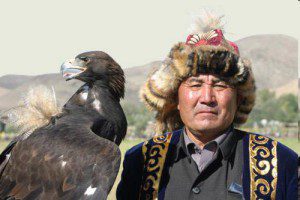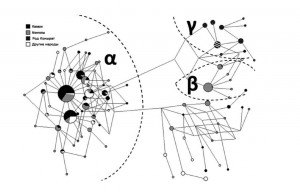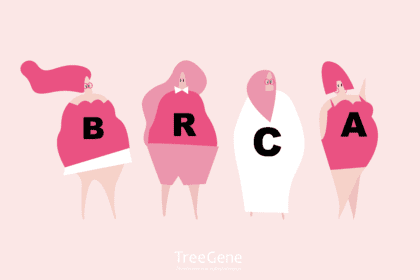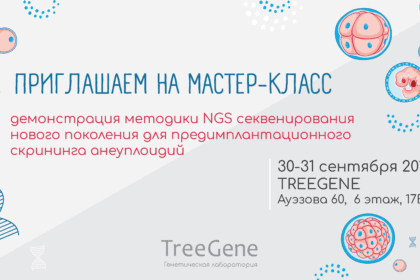Information from the website: genofond.rf
Authors: Nadezhda Markina
A partial connection between social and biological kinship has been revealed in Kazakh kin.
Geneticists have studied the relationship between social and biological kinship using the genealogical structure of the Kazakh people as an example. They created Y-chromosome genetic portraits of two high-status Kazakh clans, the steppe aristocracy and the steppe clergy. They also managed to genetically confirm for some genealogical lines the origin of the Kazakh aristocracy from the Chingizids and the Kazakh clergy from the missionaries who brought Islam to Central Asia.
An article with the results of a genetic study of Kazakh births was published in the journal Vestnik MSU by staff of the Center for Life Sciences at Nazarbayev University in Astana, the Vavilov Institute of General Genetics of the Russian Academy of Sciences, and the Medical Genetics Research Center, with participation from other scientific organizations in Russia, Kazakhstan, Ukraine, and Mongolia. N.I. Vavilov Institute of General Genetics of the Russian Academy of Sciences and the Medical Genetics Research Center with the participation of other scientific organizations from Russia, Kazakhstan, Ukraine, and Mongolia.
Y-chromosome markers, which are inherited in the male line, are actively used to study the genetic diversity of the peoples of the world. This method, in particular, revealed a Y-chromosome line about 1,000 years old, the carriers of which are the descendants of Genghis Khan. But although it is known from history that there are many Chinggisids among the Kazakh people, this population has so far remained relatively poorly studied by Y chromosome.
Aristocrats and Clergy
In order to eliminate this "white spot" on the map, geneticists focused on the study of two Kazakh clans, Kozha and Tore, both of which had a high social status in Kazakh society in the past. Kozha is a clan of the steppe clergy and legends say it traces its origins to missionaries, descendants of the Prophet Muhammad. The Tore are a clan of the steppe aristocracy, who consider themselves descendants of Genghis Khan.
In addition to 94 samples of DNA of representatives of these two genera, other Kazakh and Mongol genera, 359 people in total, were included in the study for comparison. The samples were collected by Russian, Kazakh and Mongolian geneticists as part of the international Genographic project. Two types of markers were studied on the Y chromosome: 17 microsatellites (STRs) and 27 single-nucleotide polymorphisms (SNPs).
In the gene pool of the steppe clergy (Kozh) was found a great diversity of Y-chromosome haplogroups - 14 haplogroups, three of which are represented with high frequency: R1a (37%), J2 (12%), and R2a (11%). These three haplogroups are common among the people of Iran and Tajikistan, so scientists believe that the missionaries who brought Islam to Kazakhstan and who became the ancestors of the main part of the Kozha family could come from there.
In the genus Steppe aristocracy (Tore) the diversity on the Y-chromosome was half as high, 8 haplogroups were found, three of which were represented with high frequency: C3* (35%), R1a* (22%), and R2a (17%).
Geneticists note that two haplogroups, R1a R2a, occur in both clans. This suggests that there were often marriages between the steppe aristocracy and the steppe clergy.
The Chinggisids were confirmed
It was interesting to genetically test whether the genus Tore is descended from Genghis Khan, as the legends say. The authors investigated the genus Chinggisids of Mongolia (Borjigin) and identified their most frequent haplogroups: C3* (39%) and C3c (18%). Thus, this genus overlaps with Tore by haplogroup C3*, the carrier of which is believed to be Timuchin (Genghis Khan). That means that the clan of the Kazakh steppe aristocracy could really be considered the Kazakh Genghisids. The same haplogroup C3* occurs with high frequency in two Kazakh clans: Kerei (65%) and Zhalaiyr (38%). This confirms the historical evidence of their descent to the ancient Mongolian clans, which were in close connection with the Chinggisids.
By the microsatellite (STR) markers within the haplogroup C3*, the researchers counted 783 haplotypes among the Kazakhs, Mongols and other Eurasian peoples. In the analysis, they grouped them into three clusters (α, β and γ) the largest cluster α includes the supposed haplotype of Genghis Khan.
The approximate age of cluster formation was calculated using genealogical and evolutionary (by Zhivotovsky) mutation rates. The age of the α- Chinggisid cluster, which included Kazakhs of the genus Tore, was estimated at 1000 ±300 years (using the genealogical mutation rate), which agrees with the literature data. The wide expansion of this cluster was evidently caused by the high social position of the descendants of Genghis Khan.
Cluster β includes only Mongols, its age is 600 ± 300 years. Cluster γ consists exclusively of Kazakhs of the Konyrat clan, the dating of its origin 1100 ± 400 years agrees with the historical data. As the authors write, the earliest mentions of this clan date back to the 10th century (about 1100 years ago), and by the time of Genghis Khan the Konyrat already represented a large genus.
In the history of peoples, the biological and social are closely intertwined. And the question about the relationship between biological and social kinship in the Kazakh population is answered by geneticists - this relationship is partial, not absolute. For example, not all of those who identify themselves as belonging to Genghis Khan family have haplogroup C3*, i.e. not all of them are genetically related to him. But this does not prevent the social clan association.
Source:
M.K. Zhabagin, H.D. Dibirova, S.A. Frolova, J.M. Sabitov, Y.M. Yusupov, O.M. Utevskaya, P.V. Tarlykov, I.M. Tajigulova, O.A. Balaganskaya, P. Nimadava, I.A. Zakharov, O.P. Balanovsky
Connection of Y-chromosome variability and clan structure: the gene pool of the steppe aristocracy and clergy of the Kazakhs
Bulletin of Moscow University, Series XXIII Anthropology, No. 1/2014: 96-101
The article can be downloaded here.










